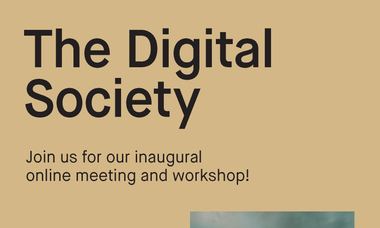The current buzzword for the construction industry at present, BIM may seem like another passing fad. The catch, however, is that it is here to stay.
BIM is the next evolutionary phase within our profession and it is a logical one, just as moving from drawing boards to computers was a natural progression before.
For a basic explanation of BIM and FAQs please visit: bimtaskgroup.org/bim-faq
To follow the CITA BIM Group (for members and affiliates in the Republic of Ireland only) on Twitter, please go to: twitter.com/citabimgroup
Here at CIAT, we know that our members and affiliates will play a key role in the delivery of BIM projects, thus we want to ensure that you have the most relevant and up-to-date information available to ensure we are heading down the same path together.
We must remember that BIM is a process and NOT a new fancy bit of software. It is changing how we work, which currently in most cases people are acting as individual silos that pass information around. It is easy to see how this can cause issues with missing or out-of-date information that is integral to the smooth running of a project. BIM professionals have the aspiration of bringing the construction industry together through true collaborative working.
Andrew Stanford MCIAT
Chartered Architectural Technologist
CIAT and BIM Level 2
CIAT continually aims to ensure that it is at the forefront of all of the developments regarding Building Information Modelling (BIM), and that its members and affiliates are regularly informed of developments and provided with information.
This includes the use of BIM Stage 2 as identified within the CONSTRUCTION PLAYBOOK Government Guidance on sourcing and contracting public works projects and programmes.
The UK BIM Framework website which has been developed by BSI, CDBB and the UK BIM Alliance can be accessed via the link here and provides links to standards and guidance.
One of the Institute’s Taskforces – the Special Issues Taskforce – deals with BIM and addresses issues regarding this initiative, and we are fortunate that Institute members and affiliates are part of Committees and other Taskforces that not only address how BIM impacts the built environment but also look at how it is a catalyst for changes to processes and procedures. We are especially proud that two Chartered Architectural Technologists (Dan Rossiter FCIAT and Ryan Tennyson MCIAT) are currently members of the CIC BIM2050 Group.
The Institute’s BIM Virtual Group regularly disseminates information on BIM to its members. This website has a separate BIM section, that features articles, reports and links to other sources, that is regularly updated and easily accessible for all of our members and affiliates and the Institute constantly seeks further ways to ensure that its members and affiliates are kept up-to-date with information regarding BIM.
Some of our members who have been involved in the initiative or work closely with BIM have provided some comments and views on BIM Level 2.
Gary Mees PPCIAT MCIAT, member of Special Issues Taskforce, summarises the important role that Architectural Technologists have played in the development of BIM: 4 April 2016 is but a staging post in the development and progress of BIM into built environment. It sets a standard to be attained for work on government funded projects in England with the other nations following on. Architectural Technologists have been influential in the development of these standards and continue to collaborate with others to progress workflows, standards and provide the skilled team members required to drive improvements for the future.
Eddie Weir PPCIAT MCIAT: We encourage members to embrace this incredible opportunity to reduce cost and waste while driving productivity and competitiveness. For many this may be the start of a journey which takes us from the traditional process of communicating design to constructing a digital virtual environment full of data rich information. These are very exciting times indeed.
Andrew Stanford MCIAT, BIM Manager, Western, Construction, ISG and member of Special Issues Taskforce: 4 April 2016 Level 2 mandate is an important milestone in BIM adoption in the UK but it is simply that, a milestone. This does not signify the end of our BIM journey but merely the commencement. Architectural Technologists will be pivotal as specialists in technology within design and construction to ensure as a collective, clients see the benefits of level 2 BIM. CIAT and its members and affiliates, now more than ever, have the important role of ensuring BIM is embedded into the design, build & operational phases of built asset delivery.
Keith Snook HonMCIAT, 40 years research and writing on the issues of information and collaboration, member of various BS and other committees contributing to the UK BIM initiative, Author of BS7000-4 Construction Design Management, CIAT representative to CIC BIM Forum, member of Special Issues Taskforce: Having been involved in preparing documentation and guidance one might imagine I’d have been looking forward to “BIM level 2 day”. Not really, and though I appreciate that a date had to be set the whole BIM thing is what in the modern idiom is called a ‘journey’ and it neither starts nor stops on April 4. One thing that I feel it isn’t and that is a “mandate on the industry”. It is clearly no such thing but a requirement for public sector procurement executives to act in a particular way. It could be argued that to stay in business it is effectively passed down to the industry as to get public sector work one must respond appropriately, but it remains a choice both on how and whether the industry responds and on private sector procurement to follow or not the government's lead. Clearly I am in favour however and what I really dream of is the day when BIM ceases to be a thing at all and becomes just a part of what we do naturally to achieve a fantastic built environment – which is what we are really here for.
Dan Rossiter FCIAT, member of CIC BIM2050 Group, member of Special Issues Taskforce: Now that the BIM Level 2 Mandate has been launched it is pivotal that our members remember two things. The first is that while it is a public sector mandate, many private organisations see the value in BIM and are insisting that supply teams adopt the process, so regardless of your native sector BIM will impact on your services. The second is that as often we (Technologists) are approached first by clients. As such as can offer to assist them in writing their Employer’s Information Requirements (EIR) opening up new revenue streams, and take the lead in managing BIM on a project to ensure that best practice is being followed, and help de-risk the project. This mandate is a golden opportunity for us to establish our dominance in the industry as the expertise in managing information; we shouldn’t squander it.
Graham Paterson HonMCIAT MCIAT, member of BIM4SME and co-author of ‘Getting to Grips with BIM: A guide for Small and Medium-sized Architecture, Engineering and Construction Firms”*: From a small business perspective, since 2012 I've assisted the BIM4SME team in raising awareness of the benefits of digital working among small UK organisations; designers, contractors, sub-contractors, suppliers and the like. With around 90% of our "industry" made up of SME and micro companies, reach and engagement have presented huge tasks for a team of volunteers. Feedback from the SME community is that people are receptive to change and open to embracing digital technologies and cultures. Level 2 is an important threshold, but what we've found is evidence of an evolutionary process where first steps are possibly the most significant for small firms. CIAT's role in contributing to the framing of UK protocols for digital working has been pivotal. That's a huge credit, to the members involved, the Institute and as a measure of how far we've moved forward as a professional body in recent years".
From an educational perspective, construction is a major player in the UK economy. It generates almost £90 billion annually (6.7% of GDP) and employs in excess of 2.9 million people. In reflecting on the Level 2 gateway, why has the skills shortage reached crisis levels? We need to work much harder to attract young people into the industry and tap into the digital skill-sets which students already have by the time they enter secondary education. On that front, the launch of CIAT's aspirATion group is an exciting and timely initiative Looking across CIAT Accredited centres in 2014 I found evidence that a number of AT undergraduate programmes were ahead of the game. As digital working evolves and gathers momentum, it's hugely encouraging to see Chartered Architectural Technologists already holding key and influential roles in practices, construction organisations and within strategic and policy making groups".
*This book was written in collaboration with James Harty and Tahar Kouider MCIAT.
BIM Regions
CIAT supports the work of, and is a partner in, BIM Regions which was set up in partnership with Construction Industry Council (CIC) and the BIM Task Group in 2012 to support the UK BIM programme. The latest website for BIM Regions can be accessed from this link: bimregions.co.uk
The Institute would like to thank all of its members who are involved in this great work.
BIM Q&A
Some of our members and affiliates may be struggling with issues relating to BIM or have a question regarding BIM. In order that CIAT can provide further information and guidance on this topic, we are asking our members and affiliates to provide us with case studies where BIM has been implemented.
These case studies can highlight what aspects of the process you have implemented within your own organisation and do not necessarily need to show full compliance with either Level 2 or Stage 2 as defined in either PAS 1192-2 or BS EN ISO 19650 series.
These can be based on projects that have been completed or are currently being worked on, and the aim is to use these case studies as a basis to provide clear guidance and information for members and affiliates. If you have a BIM question or issue, you can also send this to us too.
Please note, this is not intended to address operational and software issues which should be directed to your software provider or recommend or comment on any or related products
If you wish to submit a case study or have a question on BIM, please forward them to Graham Chalkley, Assistant Practice Director at [email protected]. Please remember to put 'BIM' in your email subject header.
BIM4HERITAGE
A new initiative - BIM4HERITAGE - has been set up, and follows the merger of a project from the Council in Training of Architectural Conservation (COTAC) and a similar group run by an architect called Idonis Jesus, and counts influential members from the National Trust, English Heritage, Scottish Heritage and Ramboll, the consulting engineering group. Their website can be accessed here: bim4heritage.org
Feedback from the BIM4HERITAGE meetings will be distributed as and when we receive it.
Related news and documents
Registration open for DCW 2025
Digital Construction Week, the UK’s leading event for innovation and technology in the built environment, has opened visitor registration for 2025.
News 19 Mar 2025
CIAT part of Knowledge Programme at Futurebuild 2025
Sessions curated by CIAT are taking place on 4 and 6 March at ExCeL, London.
News 17 Feb 2025
DESNZ Science and Technology Advisory Council opportunity
The Department for Energy Security and Net Zero (DESNZ) are looking to recruit twelve members for a new Science and Technology Advisory Council (STAC).
News 18 Dec 2024
Final reminder | Free training in digital technologies and BIM
All members and affiliates can sign up for free training (ending in December) in digital technologies and BIM, aimed at facilitating energy efficiency in construction.
News 11 Dec 2024
What would you do if you suffered a cyber attack?
Architectural Technologists may be exposed to cyber incidents from a variety of sources – ranging from your use of BIM and AI through emails, databases, cloud storage and more.
News 10 Dec 2024
AI and the challenges to intellectual property
Issues and risks presented by AI and related technologies, particularly concerning intellectual property, data privacy and security risks.
News 27 Nov 2024
CIAT announces launch of Digital Society
CIAT is thrilled to announce the launch of the Digital Society, a virtual group focused on enhancing the Institute's involvement in standards and policies related to digital technologies, including BIM, augmented reality and AI.
News 24 Jul 2024
Let's get (cyber) physical
An article written by Dan Rossiter FCIAT, Vice-President Technical from AT Journal issue 149.
News 6 Jun 2024








